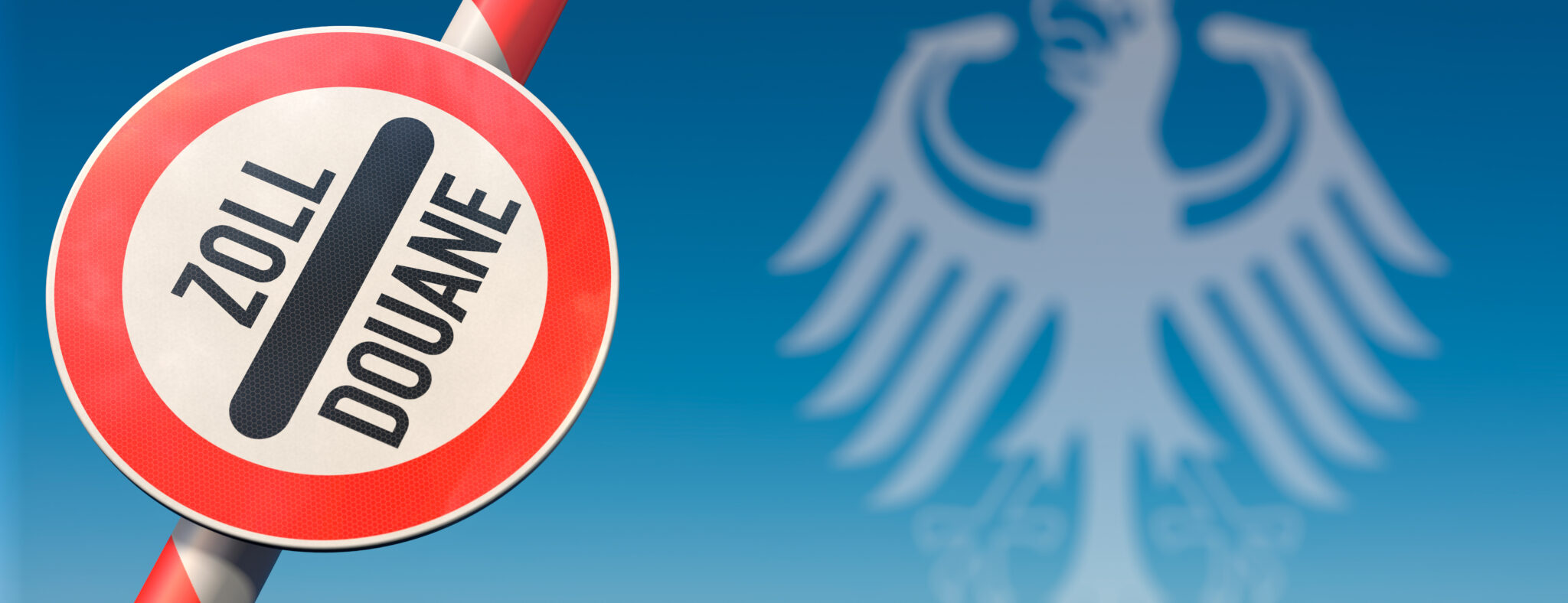The ATLAS release AES 3.0 is a new version of the IT-supported export procedure "AES" (Automated Export System), which the European Commission launched together with member states for the export sector. AES is used to accept electronic export declarations and to exchange data electronically between customs offices of export and customs offices of exit. In Germany, the corresponding IT procedure is called ATLAS. This enables companies to use the simplified export declaration procedure of the Union Customs Code (UCC). In terms of content, the AES regulates in particular the design of incoming and outgoing messages for export.
Version AES 3.0 was developed to adapt the AES procedure to the requirements of the UCC. It contains a number of innovations that are important for everyday work in customs and export processing.
What changes for participants?
Due to the changeover from AES 2.4 and AES 3.0, there are some changes that are important for exporters.
1. country of origin of the goods
Previously, there was only a subdivision into the corresponding shipping region at the federal state level Germany and countries other than Germany.
From now on it is mandatory to indicate the correct country of origin of the goods. The previously possible indication of the country code QU (unknown origin) is no longer applicable.
If the country of origin is not known when the export declaration is submitted, the presumed country of origin or, alternatively, the country of origin/dispatch can be indicated.
Example: If one has a German federal state as the region of origin (01 - 16), then the country of origin DE must also be indicated.
If you specify a foreign country (99) as the region of origin, then you must also specify a country of origin (e.g. CN for China). For European goods, you can also specify "EU".
This has the consequence that, if necessary, several individual items must be declared in the Export Accompanying Document (ABD) in the future in the case of different origins.
The country of origin of the goods must be stated in your shipment documents. Please provide us with this information in the order in the future.
2. carrier
The carrier is a new legally obligatory information and must therefore be indicated in the export declaration in the future. The carrier is also considered to be the forwarding agent.
If the carrier is not known at the time of submission of the export declaration, the presumed carrier can be indicated.
If you do not provide us with a carrier on your behalf, the declarant (declarant = exporter) is considered the carrier.
The complete address and either the EORI or TCUI (Third Country Unique Identification) number of the carrier must be provided.
Please inform yourself in advance with which forwarding agent or freight company you are shipping the goods and obtain the corresponding addresses as well as the EORI or TCUI numbers.
Please provide us with this information in the order in the future. If you do not provide us with a carrier in your order, we will register you as a carrier accordingly.
3. domestic mode of transport and registration number of the outgoing means of transport.
The registration number of the outgoing means of transport is obligatory information in the export declaration and must always be indicated, among other things, if "road transport" is declared as the domestic mode of transport. If the registration number is known at the time the export declaration is filed, it must be indicated.
If it is not known at the time of submission of the export declaration, the presumed registration number can be indicated.
Please contact your forwarding agent or freight company in advance to find out which registration number must be indicated for the domestic shipment of goods.
In the future, please provide us with this information in the order.
4. mode of transport at the border and registration number of the active means of transport crossing the border.
The registration number of the active means of transport crossing the border is mandatory information in the export declaration and must be declared accordingly.
The same requirements apply as for the registration number of the outgoing means of transport.
Please contact your forwarding agent or freight company in advance to find out which registration number must be given for the cross-border shipment of goods.
In the future, please provide us with this information in the order.
5. indication of registration numbers for chemical substances and preparations within the European Customs Inventory of Chemical Products (ECICS).
In the future, the Chemical Abstract Service number (CAS) and the Customs Union and Statistics number (CUS) must be indicated in the export declaration for certain dangerous goods.
The CAS number (also CAS Registry Number, CAS = Chemical Abstracts Service) is an international designation standard for chemical substances. For each chemical substance (including biosequences, alloys, polymers) registered in the CAS database, there is a unique CAS number.
there is a unique CAS number.
The CUS number is an identifier assigned to chemical substances and preparations within the European Customs Inventory of Chemical Products (ECICS).
ECICS - European Customs Inventory of Chemical Products (europa.eu)
Please provide us with the CAS and CUS number in the order in the future.
6. recording info ECCN number
In the context of U.S. export control, ECCN is the abbreviation for "Export Control Classification Number." The ECCN is an alphanumeric designation used in the U.S. dual-use Commerce Control List (CCL) to classify dual-use items.
An ECCN categorizes goods based on their nature and technical parameters. The Export Control Classification Number serves as an important criterion in U.S. export control for reviewing licensing requirements for export and re-export.
The contents listed in the ECCNs are predominantly identical to those of the goods descriptions in Annex I of the EU Dual-Use Regulation. Both the EU Dual-Use Goods List and the US Dual-Use Goods List are based on decisions of the international export control regimes (e.g. Wassenaar Agreement, etc.).
Please provide us with the EECN number in the order in the future.
7 LRN - Local Reference Number
The LRN represents a reference number (Local Reference Number; LRN) defined and assigned by the participant (and, if applicable, agreed with the competent customs authorities), which is used for the unique identification of the created declaration.
It replaces the previous reference number and is used for the provisional identification of an export transaction between receipt and acceptance.
8. ensuring a smooth processing of your shipment.
If you prepare the export declaration yourself, we need the export accompanying document (ABD) together with your order as a PDF file.
Based on the export accompanying document, all necessary shipping and freight documents will be created promptly, including the transit declaration (T1 or T2) according to the new Europe-wide customs regulations. This includes the mandatory entry of all HS codes, product descriptions and weight in the T1/T2.
Alternatively, if the shipping declaration is created via EDI, please ensure that you send us the electronic copies of the above documents. Our integration team can assist you in setting up API-based automatic document transmission.
To ensure proper customs clearance, the exact trade description of your products is mandatory. General descriptions such as "parts", "machinery" or "electronic components" are not accepted by the authorities and may lead to possible delays due to rejections from the authorities and necessary clarifications from our side.
Please send us the export accompanying documents created on your side in PDF form in the order in the future.
The list is not subsequent. Basic information can be found in ATLAS-Info 0306/2022.

